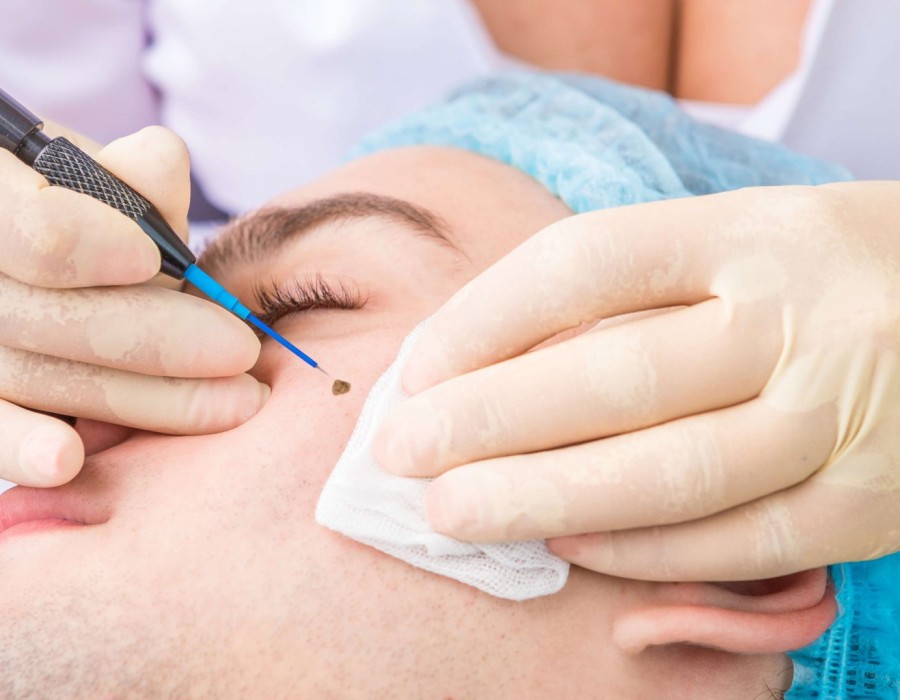Mole removal can be accomplished through various methods, each with its own set of benefits and considerations. The two primary categories of mole removal are surgical and non-surgical. Understanding the differences between these methods can help you choose the best approach based on your needs, preferences, and the characteristics of the mole. Here’s a detailed comparison of surgical and non-surgical Mole Removal Treatment in Dubai techniques:
Surgical Mole Removal
Methods
- Excisional Surgery
- Procedure: Involves cutting out the mole along with a margin of healthy skin. The wound is then stitched closed.
- Indications: Ideal for moles that are deeper or have potential concerns, such as suspected skin cancer.
- Outcome: Provides a thorough removal and allows for biopsy of the tissue.
- Shave Excision
- Procedure: The mole is shaved off at the surface level using a surgical blade.
- Indications: Suitable for raised moles. It is less invasive than excisional surgery.
- Outcome: Generally used for cosmetic purposes and may leave a flat scar.

Benefits
- Complete Removal: Surgical methods ensure the entire mole is removed, which is crucial for moles with potential malignancy or for thorough cosmetic reasons.
- Biopsy Capability: Allows for biopsy of the removed tissue, providing valuable information for diagnosing skin conditions or cancer.
- Effective for Various Moles: Suitable for different types and sizes of moles, including larger or deeper ones.
Considerations
- Scarring: Surgical methods can result in noticeable scars, especially with excisional surgery. The extent of scarring depends on the size and location of the mole and the skill of the surgeon.
- Recovery Time: Requires a longer recovery period compared to non-surgical methods. There may be stitches and a need for follow-up visits to monitor healing.
- Invasiveness: More invasive than non-surgical methods, involving cuts and stitches. This can increase the risk of complications such as infection.
Non-Surgical Mole Removal
Methods
- Laser Removal
- Procedure: Uses focused light beams to break down the pigment in the mole. The mole gradually fades or falls off.
- Indications: Effective for flat, pigmented moles. Not typically used for raised or large moles.
- Outcome: Minimal scarring and usually requires multiple sessions for complete removal.
- Cryotherapy
- Procedure: Involves freezing the mole with liquid nitrogen, causing it to fall off over time.
- Indications: Suitable for smaller, benign moles.
- Outcome: The mole usually falls off within a few weeks, leaving minimal scarring.
- Electrodesiccation
- Procedure: Uses high-frequency electric currents to burn off the mole.
- Indications: Effective for superficial moles and often used for cosmetic purposes.
- Outcome: Generally results in minimal scarring and quick healing.
Benefits
- Minimal Scarring: Non-surgical methods typically result in less scarring compared to surgical techniques. The focused treatment minimizes damage to surrounding skin.
- Quick Recovery: Most non-surgical methods have a faster recovery time, allowing individuals to return to normal activities sooner.
- Less Invasive: Non-surgical methods do not involve cutting the skin, reducing the risk of infection and complications.
Considerations
- Limited Effectiveness for Certain Moles: Non-surgical methods may not be suitable for larger, raised, or potentially malignant moles. Some moles may require multiple treatments or alternative methods.
- No Biopsy Capability: Non-surgical methods do not allow for biopsy of the mole, which may be important for diagnosing certain skin conditions.
- Multiple Sessions: Some non-surgical methods, like laser removal, may require multiple sessions to achieve the desired result.
Comparative Summary
Effectiveness
- Surgical: Generally more effective for complete removal of various types of moles, including deeper and potentially malignant ones.
- Non-Surgical: Effective for superficial and benign moles but may not be suitable for larger or suspicious moles.
Scarring and Recovery
- Surgical: Higher risk of noticeable scarring and longer recovery time. Follow-up care may be required.
- Non-Surgical: Typically results in less scarring and quicker recovery, with minimal post-procedure care needed.
Invasiveness and Risk
- Surgical: More invasive with potential risks such as infection and scarring. Requires careful aftercare and monitoring.
- Non-Surgical: Less invasive with reduced risk of infection. However, may require multiple treatments and lacks biopsy capability.
Conclusion
Choosing between surgical and non-surgical mole removal depends on several factors, including the mole’s characteristics, the need for biopsy, personal preferences, and desired outcomes. Surgical methods are typically preferred for complete removal and diagnosis of deeper or suspicious moles, while non-surgical methods offer a less invasive approach with minimal scarring and faster recovery for superficial or benign moles. Consulting with a dermatologist can help you determine the most suitable method based on your specific needs and ensure the best results for your mole removal.





Comments